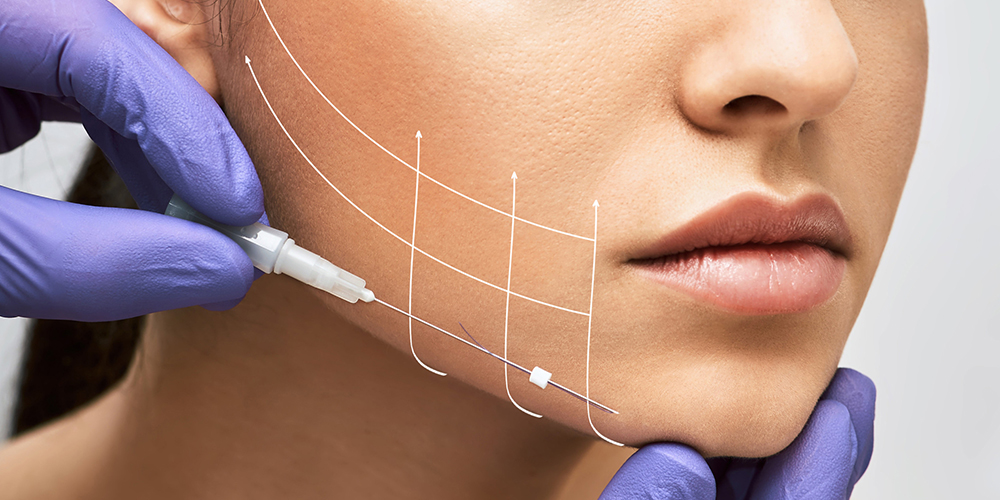- +91 97727 60561
- info@drdhabhai.in
- Wed - Sat: 5 PM - 8 PM Sunday Off

As the years go by, the signs of ageing begin to show on our faces, leading to sagging skin, wrinkles, and a loss of facial volume. Many individuals desire to regain a youthful appearance without invasive surgical procedures. In recent years, thread lifts have emerged as a popular non-surgical facelift option, offering a minimally invasive way to lift and rejuvenate the skin. This article explores the concept of thread lift, its benefits, the procedure, potential risks, and the outcomes it can achieve.
A thread lift is a cosmetic procedure designed to lift and tighten sagging facial and neck skin. It involves using dissolvable sutures or threads made from biocompatible materials, such as PDO (Polydioxanone) or PLLA (Poly-L-Lactic Acid). These threads are inserted into the skin’s deeper layers to create a lifting effect, stimulating collagen production and enhancing the skin’s firmness and elasticity.
The popularity of thread lifts can be attributed to their several advantages compared to traditional surgical facelift procedures. Some of the key benefits include:
Non-surgical: A thread lift is a minimally invasive procedure that requires no surgical incisions or general anaesthesia, reducing the risks and downtime associated with surgery.
Quick Recovery: Patients typically experience minimal downtime and can resume regular activities soon after the procedure.
Natural Results: The lift achieved through thread lift appears more realistic, enhancing the skin’s collagen production over time.
Versatility: Thread lift can target specific areas of the face, such as the cheeks, jawline, eyebrows, and neck, tailoring the treatment to individual needs.
The thread lift procedure is typically performed in an outpatient setting by a qualified cosmetic surgeon or dermatologist. The process involves several steps:
Consultation: The patient discusses their concerns and aesthetic goals with the physician, who evaluates their skin condition and determines whether a thread lift is suitable.
Anaesthesia: Local anaesthesia, or numbing cream, is applied to the treatment areas to ensure a comfortable experience during the procedure.
Thread Insertion: The threads are skillfully inserted into the targeted areas using fine needles or cannulas. The number and type of threads used depend on the patient’s skin condition and desired outcome.
Lifting and Tightening: The inserted threads are gently pulled to lift the skin and achieve the desired tightening.
Trimming Excess Threads: Any excess threads are carefully cut, leaving only the necessary amount to create the desired lift.
Post-Procedure Care: After the procedure, the patient is given specific instructions on how to care for their skin and reduce any temporary side effects.
While thread lifting is considered safe, like any medical procedure, it carries potential risks and complications.
The results of a thread lift procedure are not immediately noticeable, as the skin needs time to produce collagen and integrate the threads. However, over the following weeks and months, patients experience gradual improvements in their skin’s texture, firmness, and overall appearance. The outcomes can last up to a year or longer, depending on the type of threads used and the individual’s skin response.
Thread lift is an innovative and effective non-surgical facelift option that can help individuals achieve a more youthful and rejuvenated appearance without extensive downtime or surgery. With its quick recovery, natural-looking results, and minimal risks, thread lift continues to gain popularity among those seeking a non-invasive solution to combat the effects of ageing. However, like any cosmetic procedure, consulting with a qualified professional and having realistic expectations for the best possible outcome are crucial.